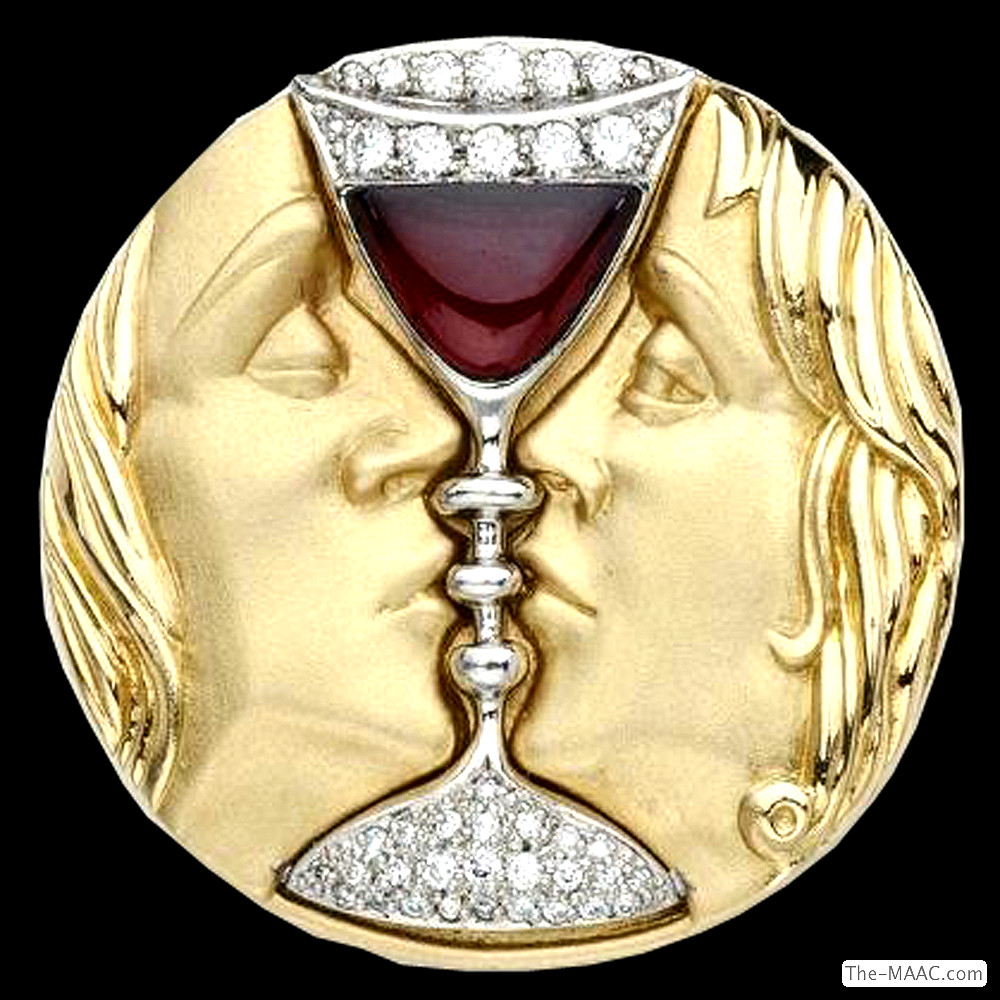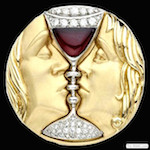
Tristan and Isolde Brooch by Salvador Dali, signed, 18K gold with garnet and diamonds, USA, circa 1980. Leah Gordon Gallery, The Manhattan Art & Antiques Center [#18/212.872.1422]
This striking 18k gold brooch features the two lovers in profile separated by a chalice of wine, represented by a brushed garnet and 33 full-cut diamonds. Of this brooch, Dali mused “the heads are juxtaposed to form a goblet, which, in turn suggests the effluence of love possible between man and woman.” But the chalice is not just a metaphor.
In Wagner’s epic 1865 opera, which is based on the legend dating back to the 12th century, Tristan and Isolde unwittingly drink a love potion that make them incapable of staying away from each other, despite the fact that Isolde is betrothed to Tristan’s uncle, King Marke. Inevitably, the king discovers their affair and the lovers escape to be together but Tristan is mortally wounded in the flight and dies with Isolde’s name on his lips as she reaches for him. The opera ends with Isolde’s dramatic aria “Liebstod,” which translates to “love death,” a celebration of the consummation of their love after death.
Compared to Dali’s other surrealist jewelry, the “Tristan and Isolde” brooch is almost straightforward in both beauty and theme–what greater inspiration for art is there than love? For more information about this brooch contact Leah Gordon, Gallery #18 at The Manhattan Art & Antiques Center/212.872.1422/leahgor50c@aol.com.






